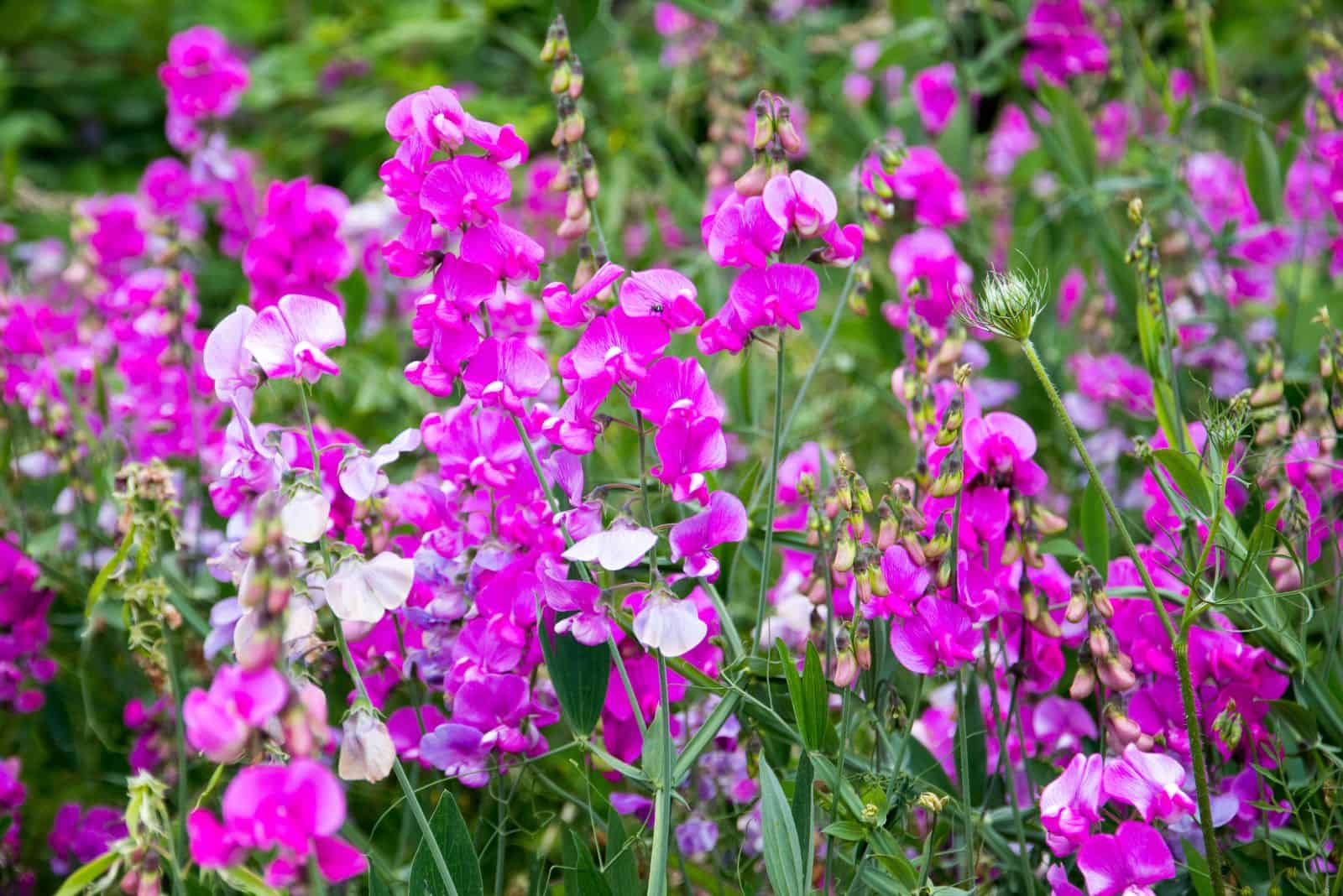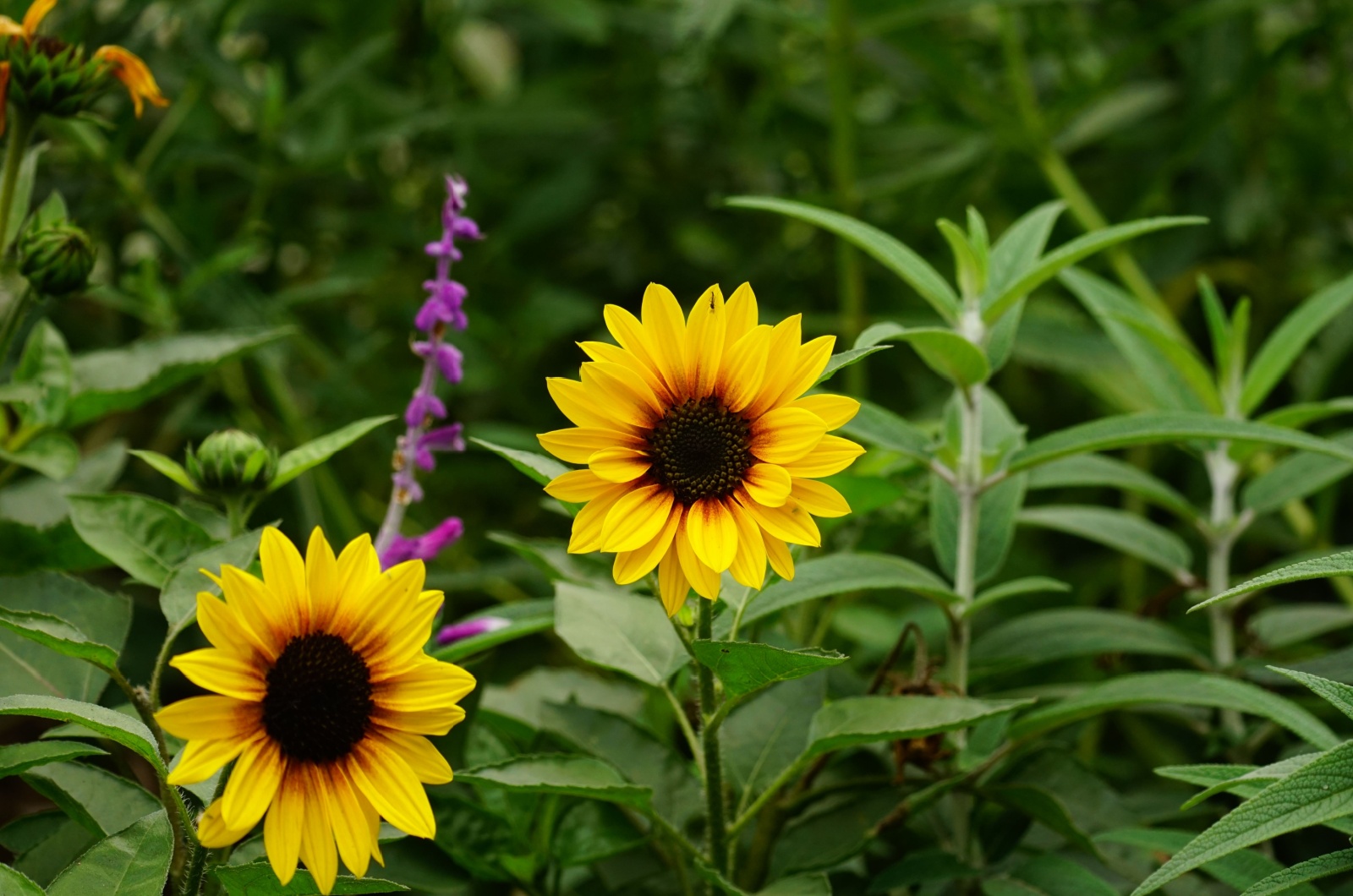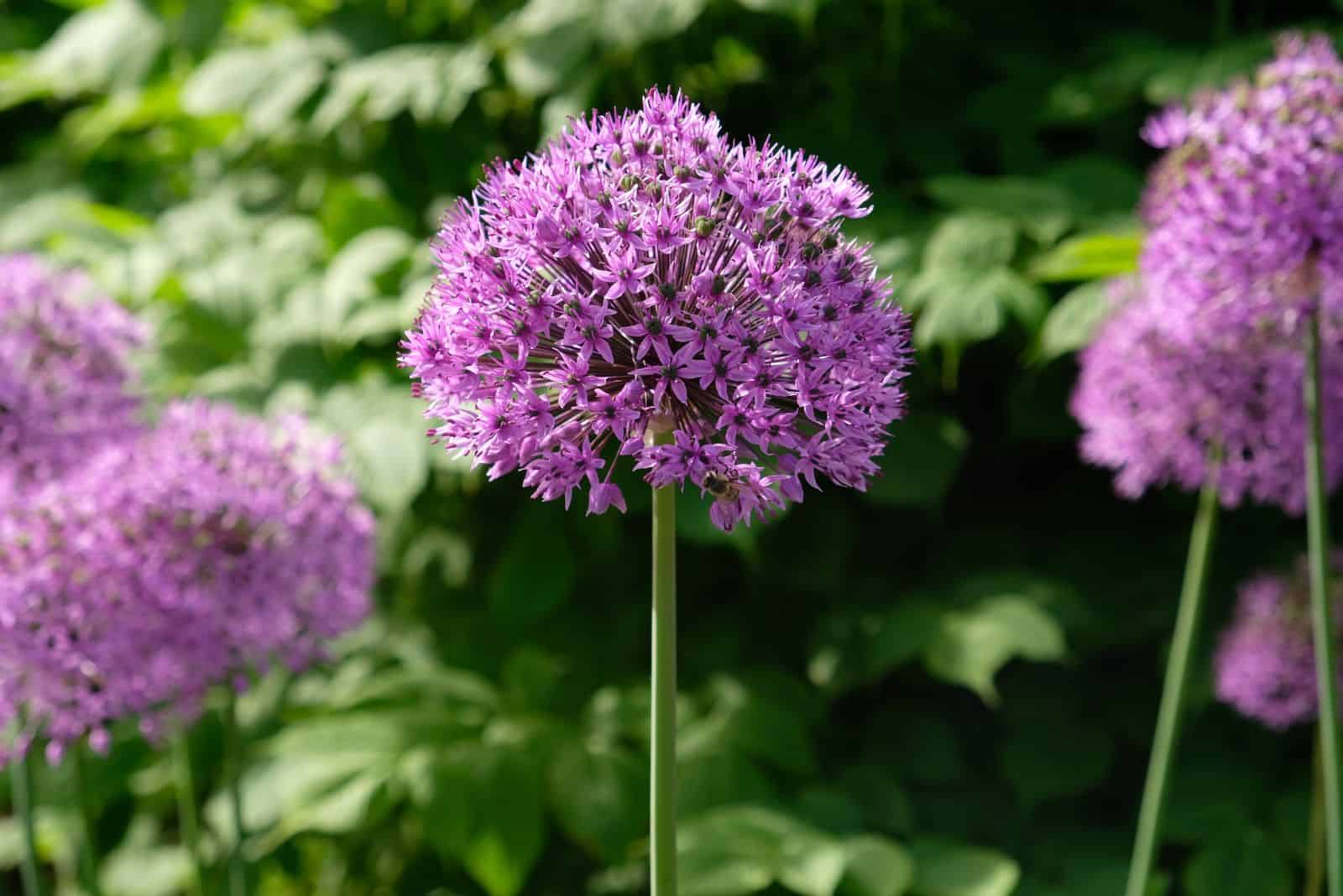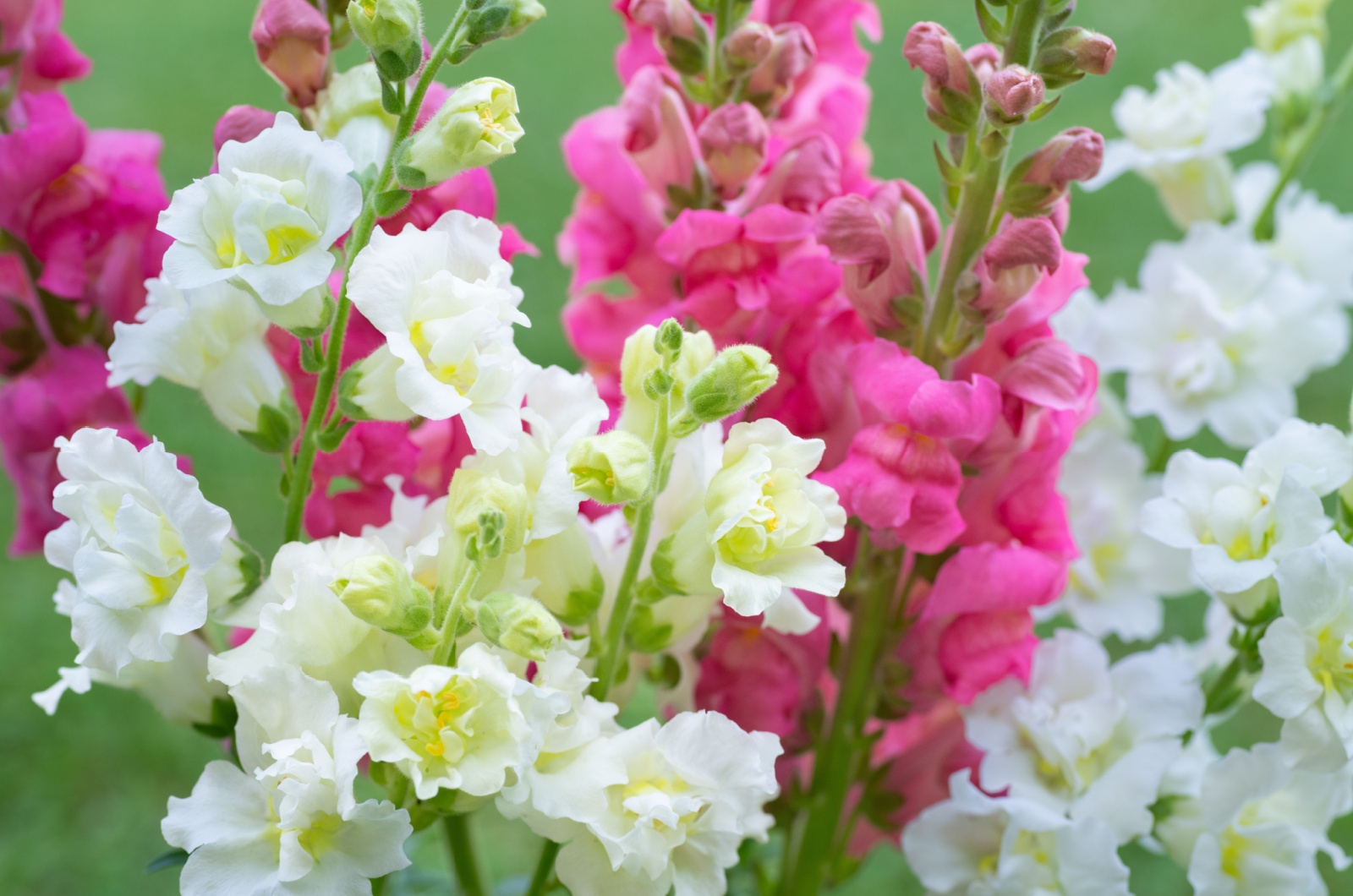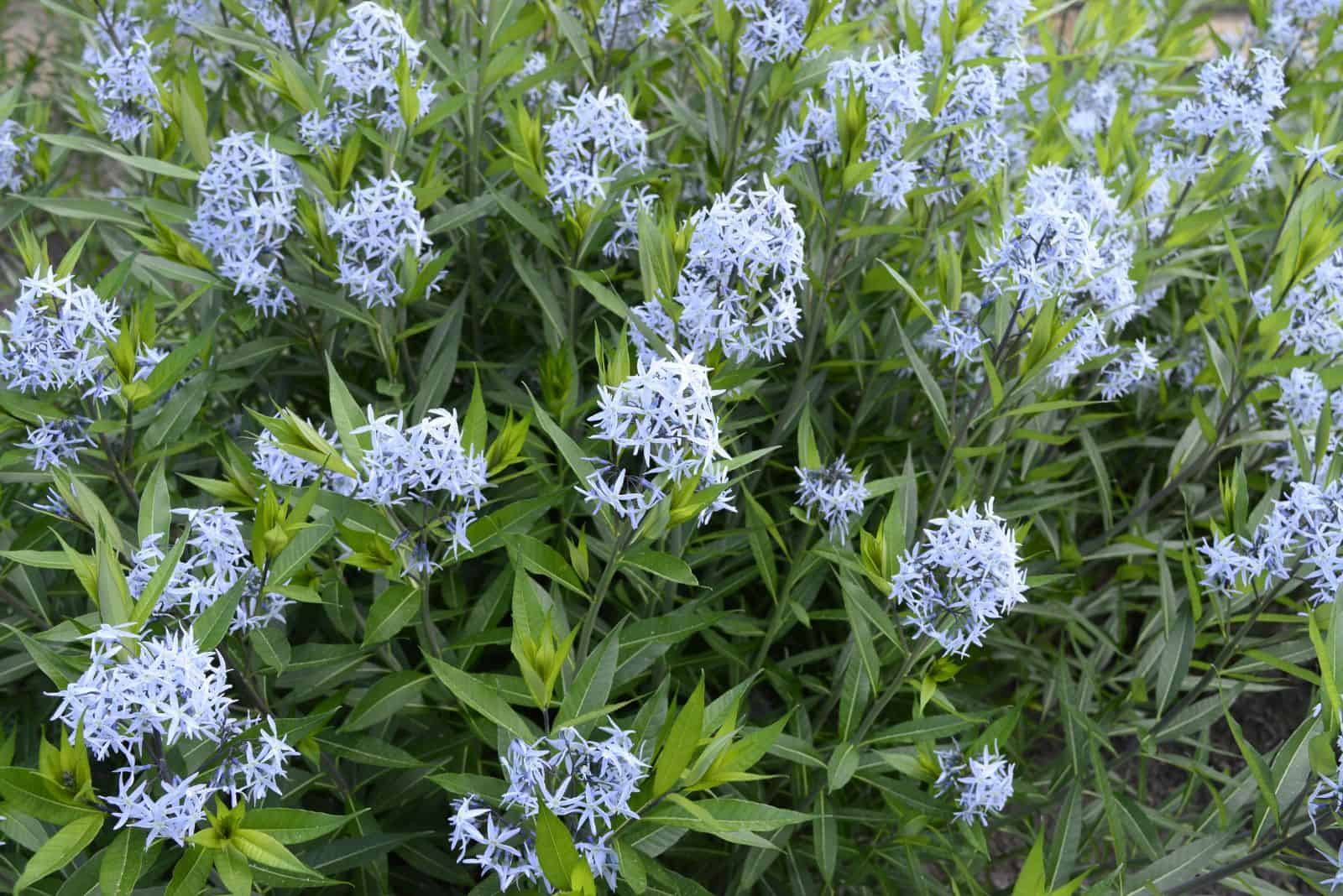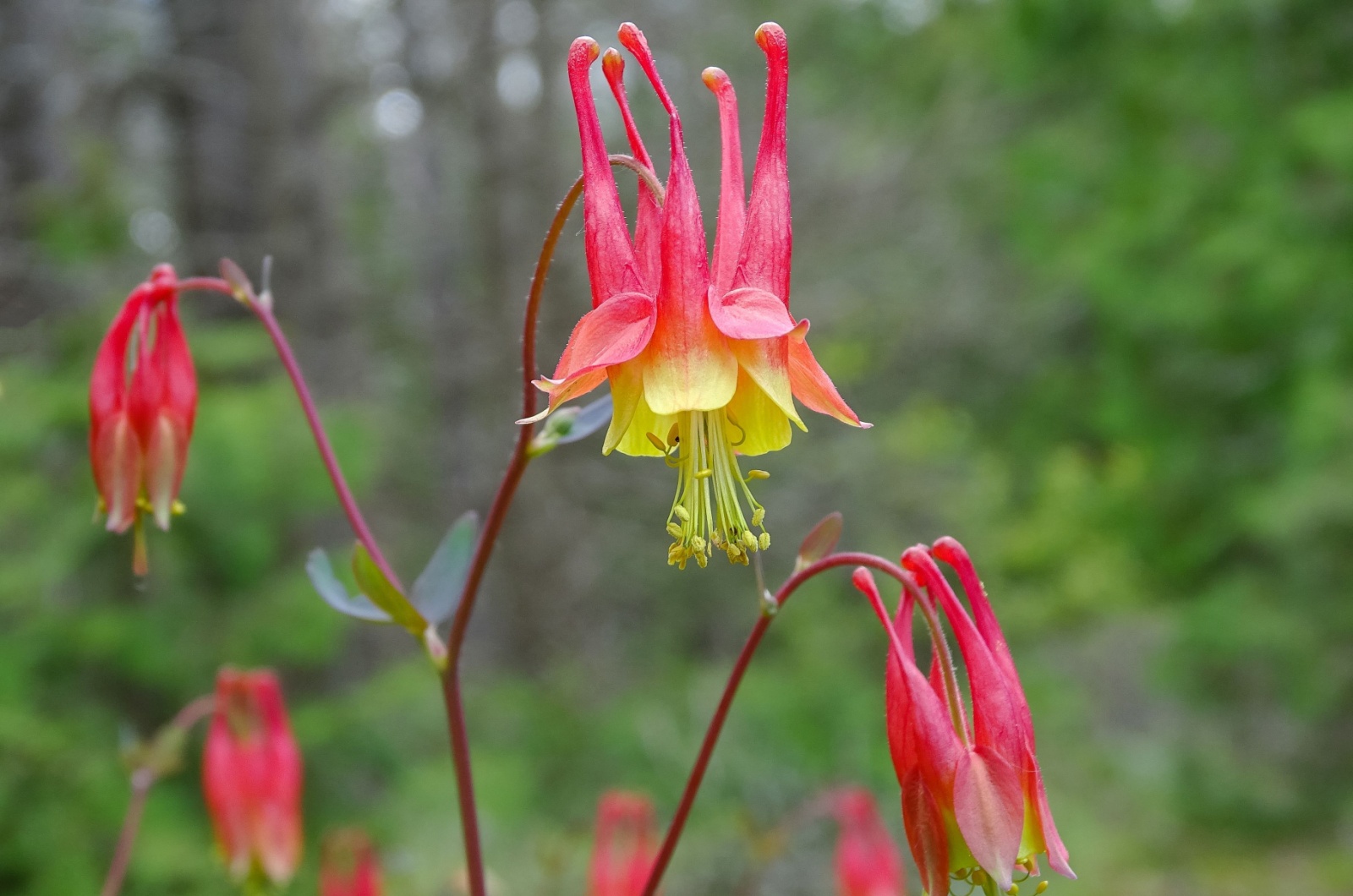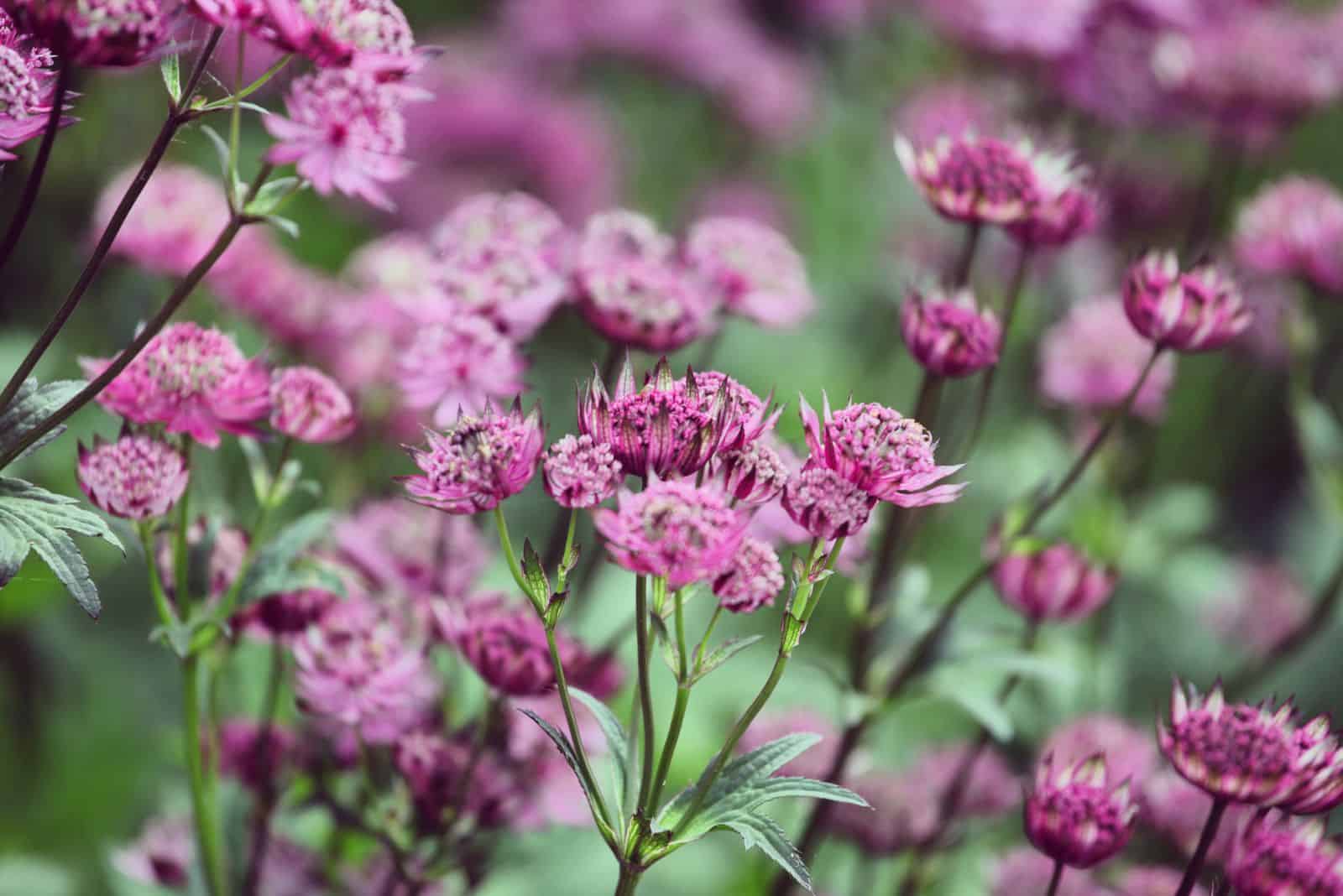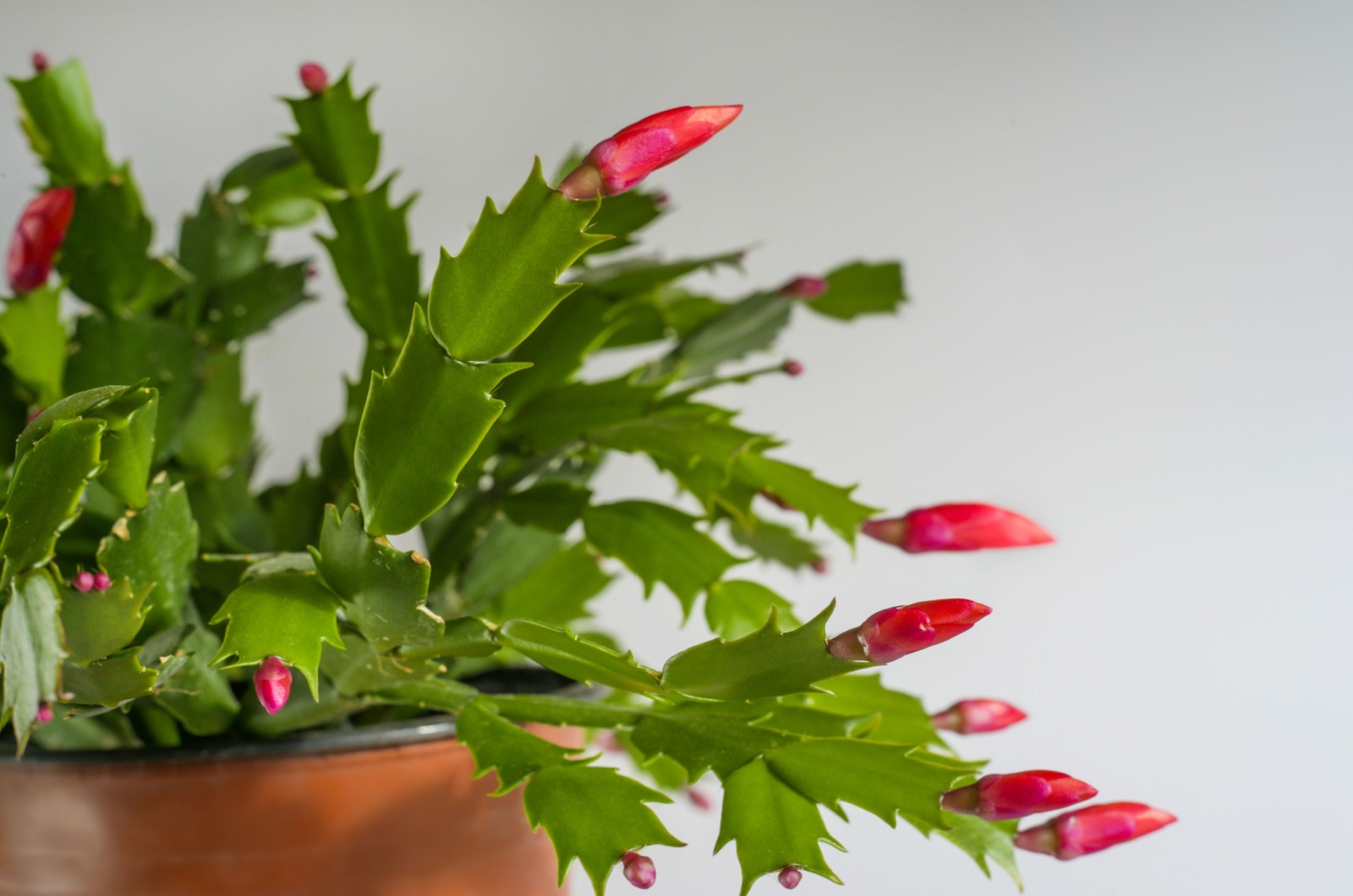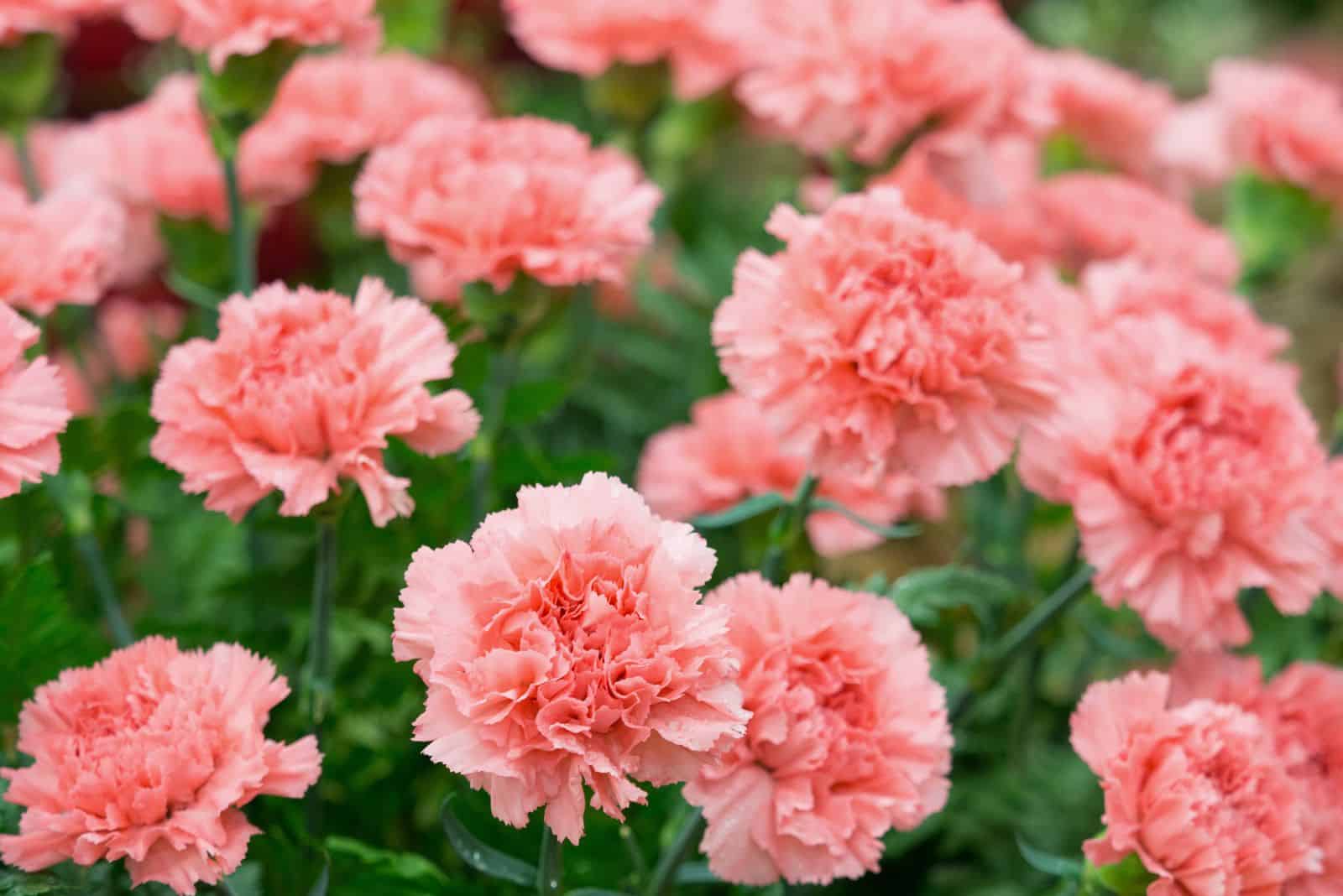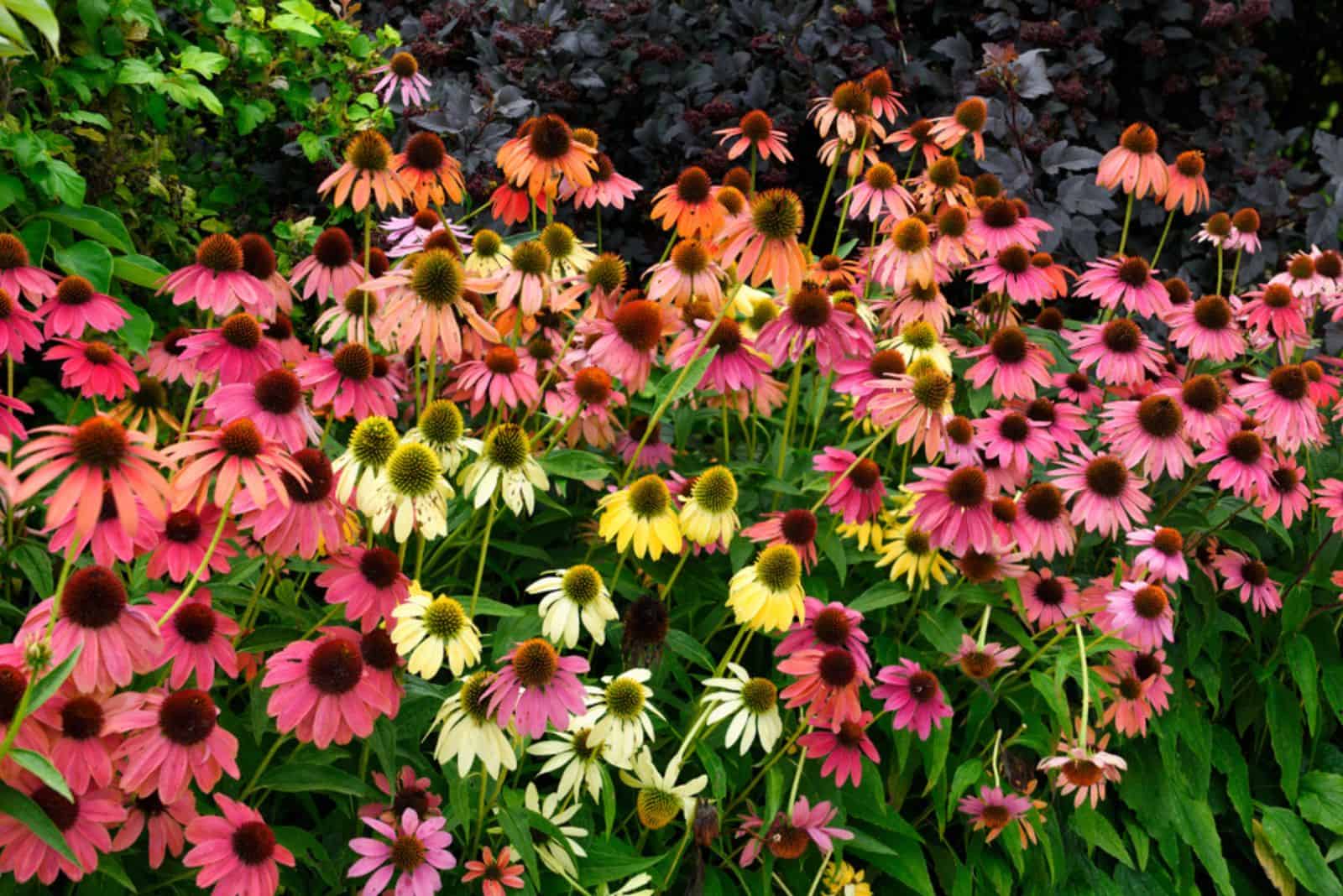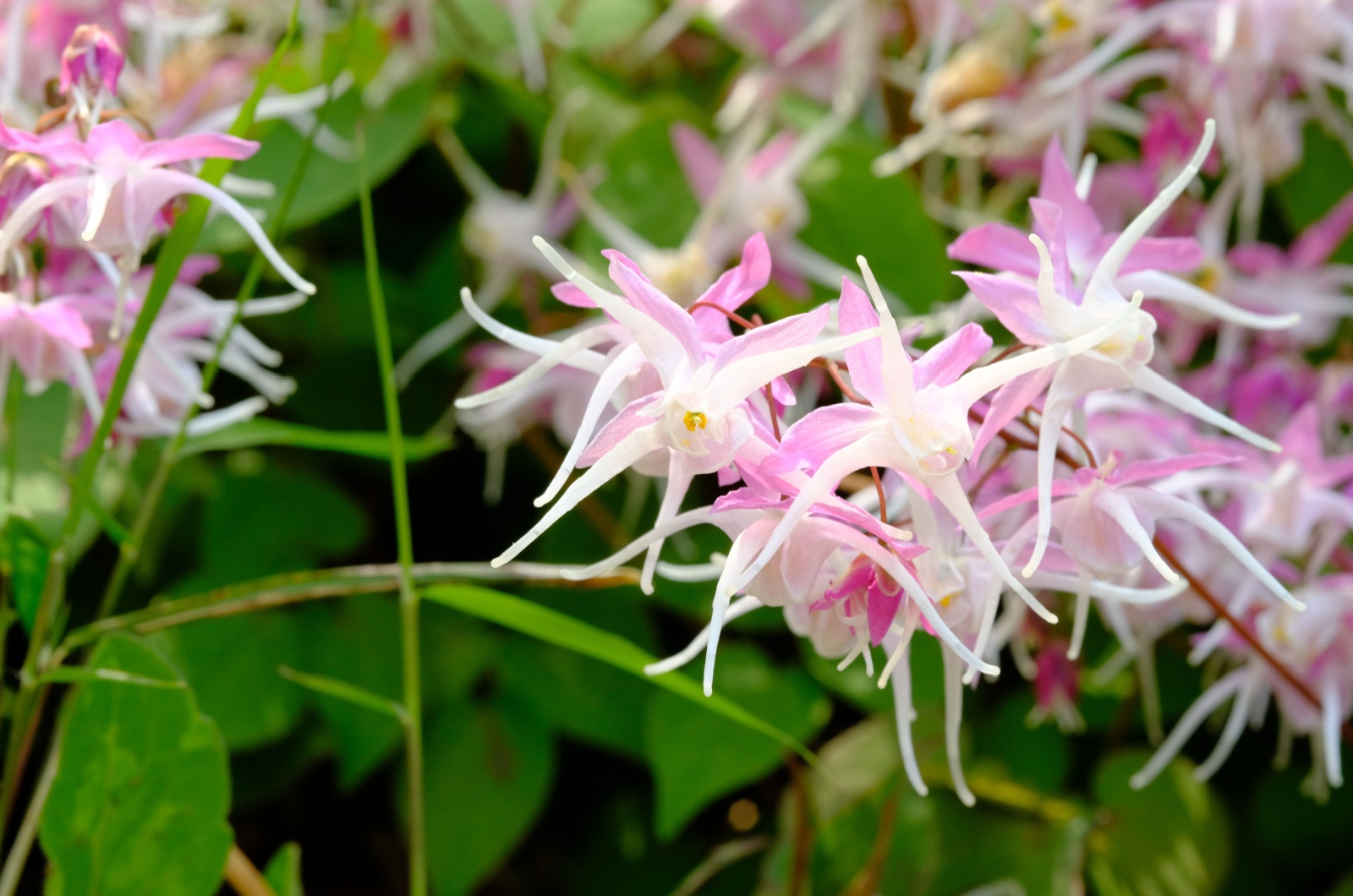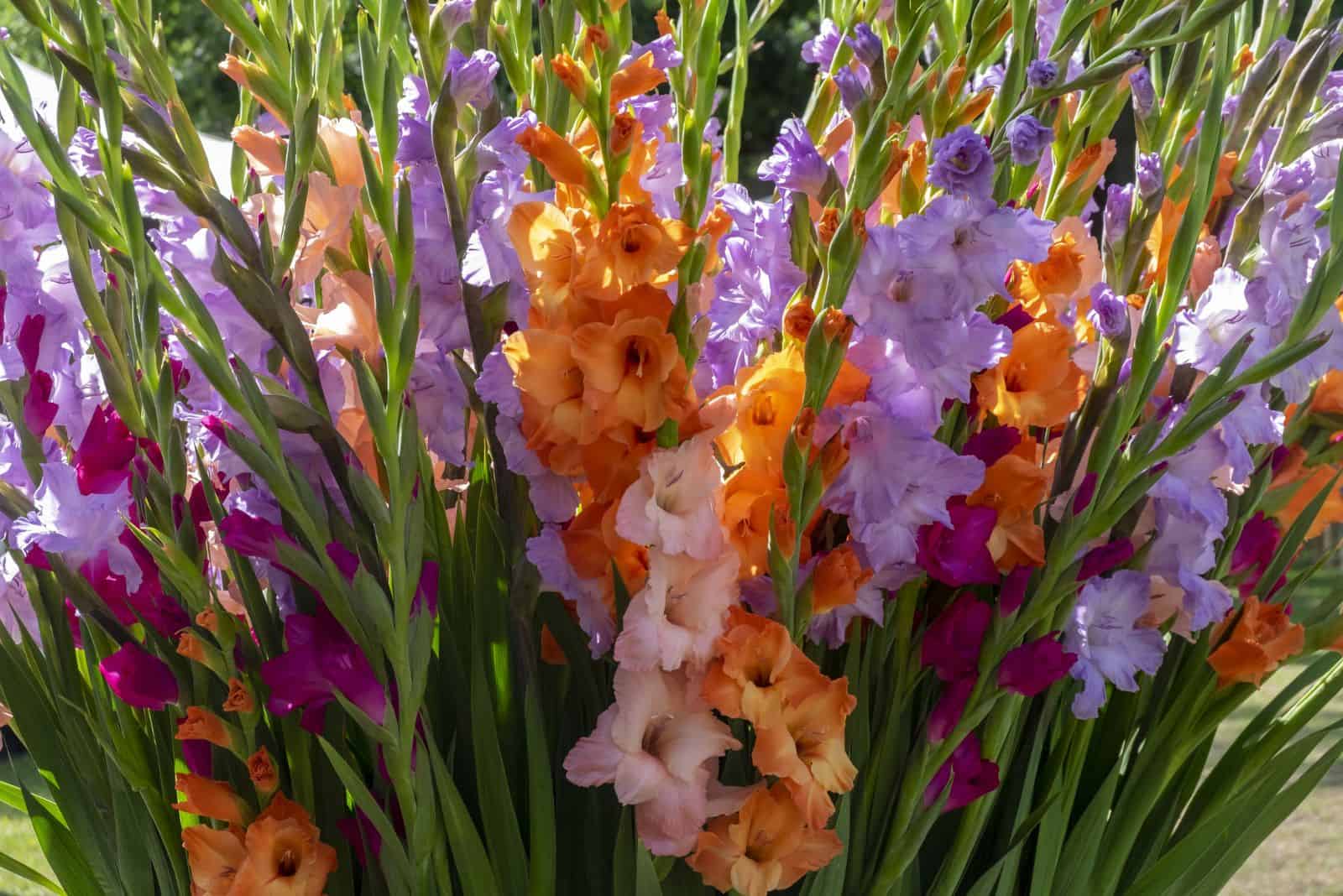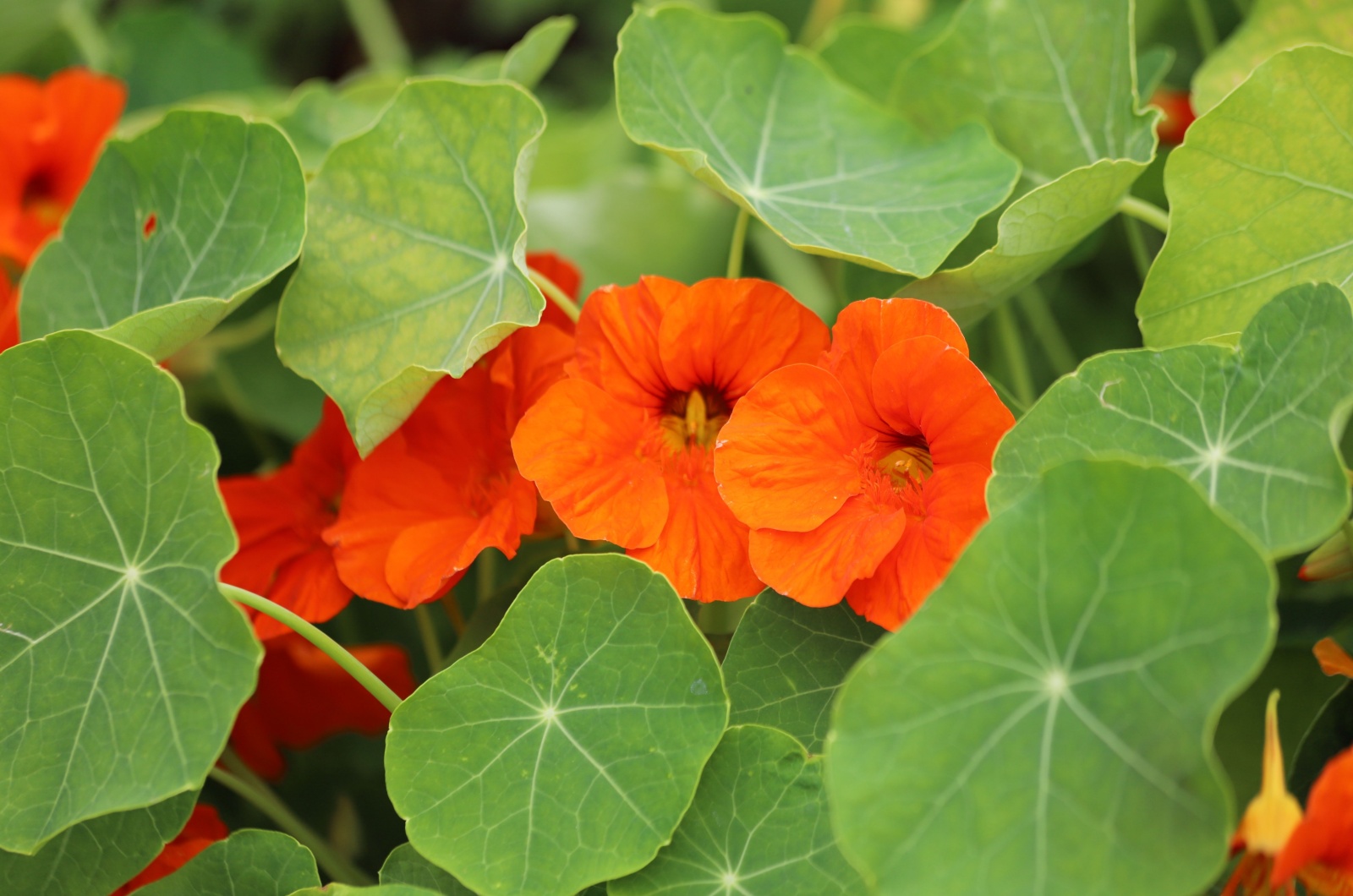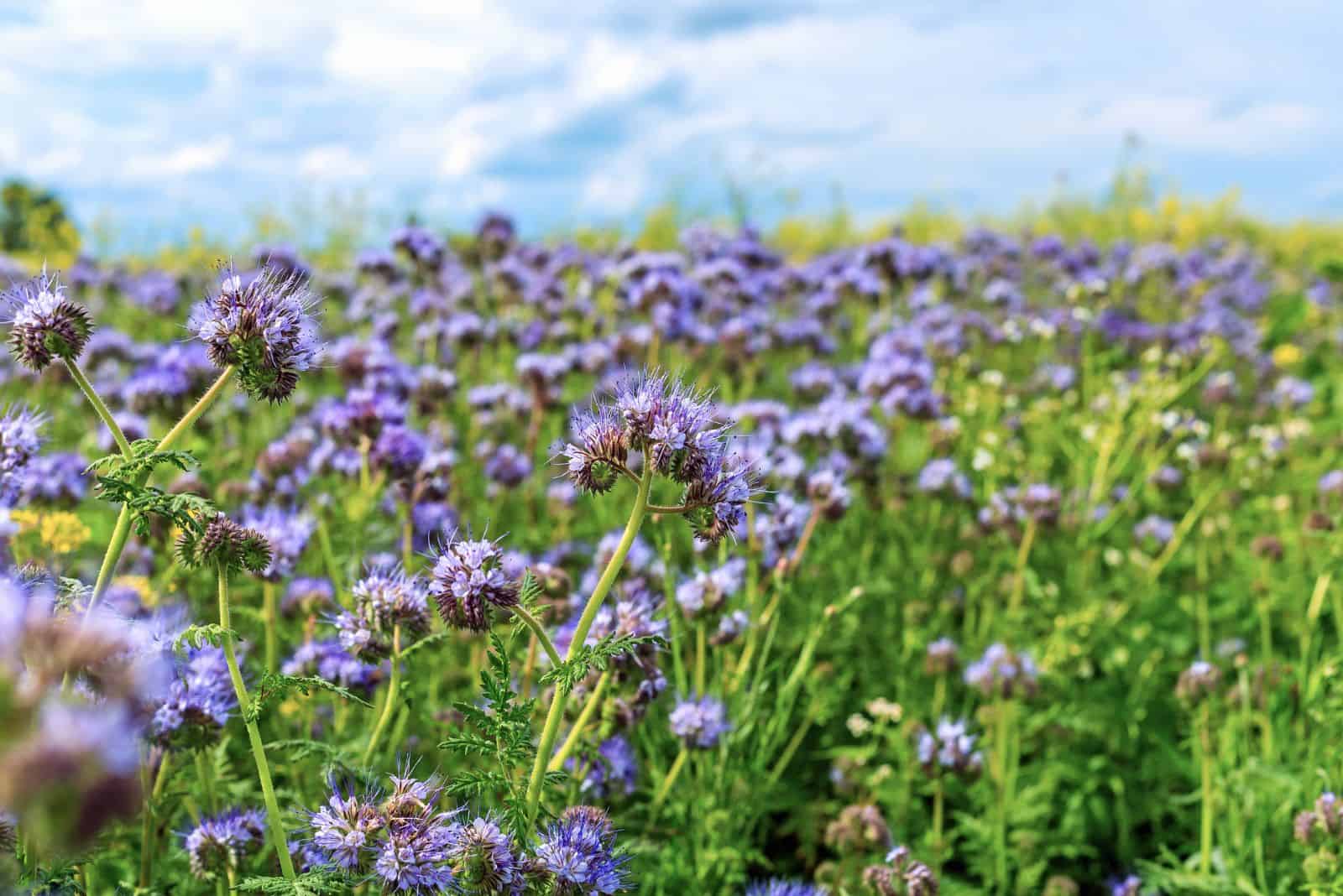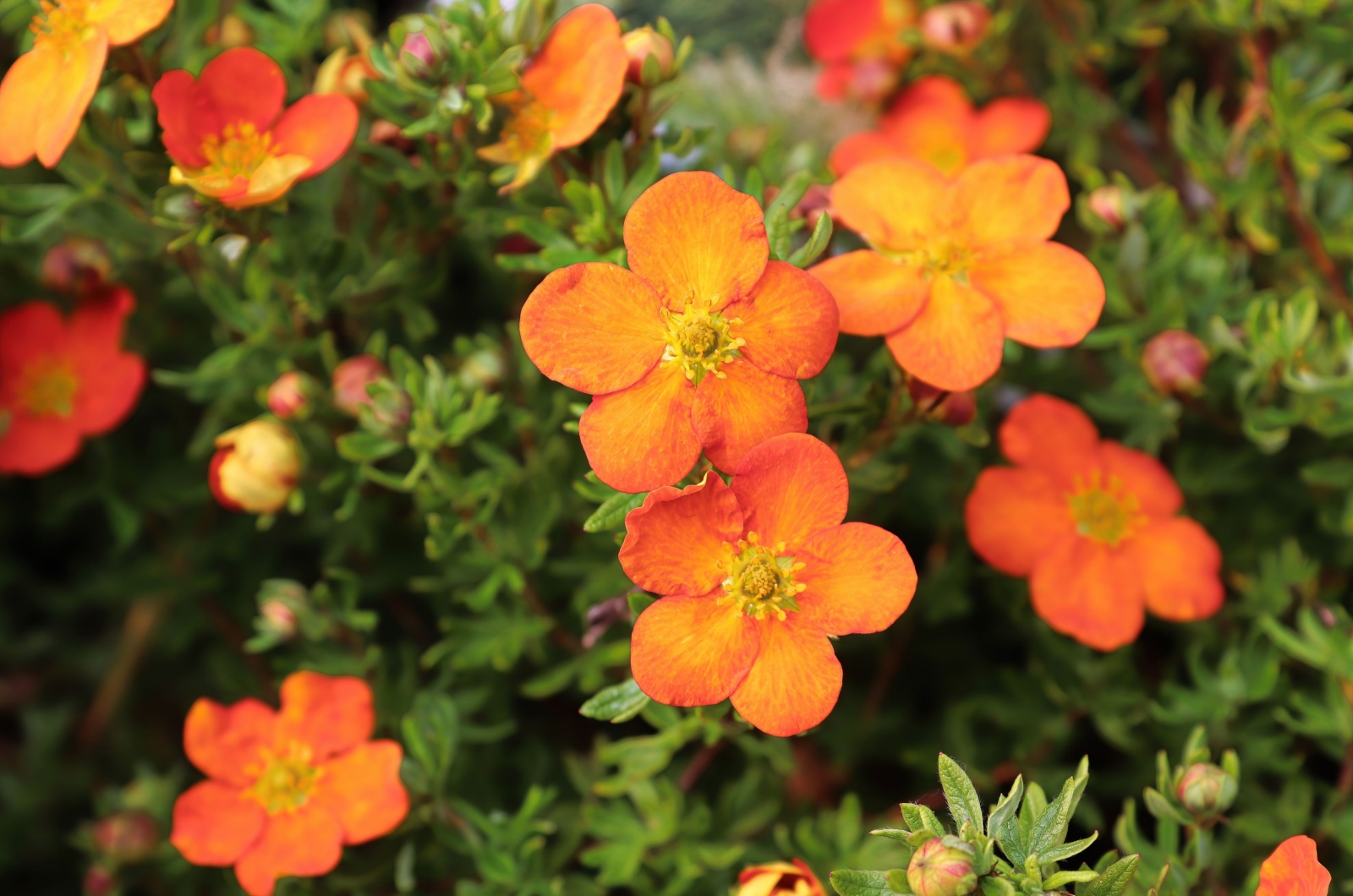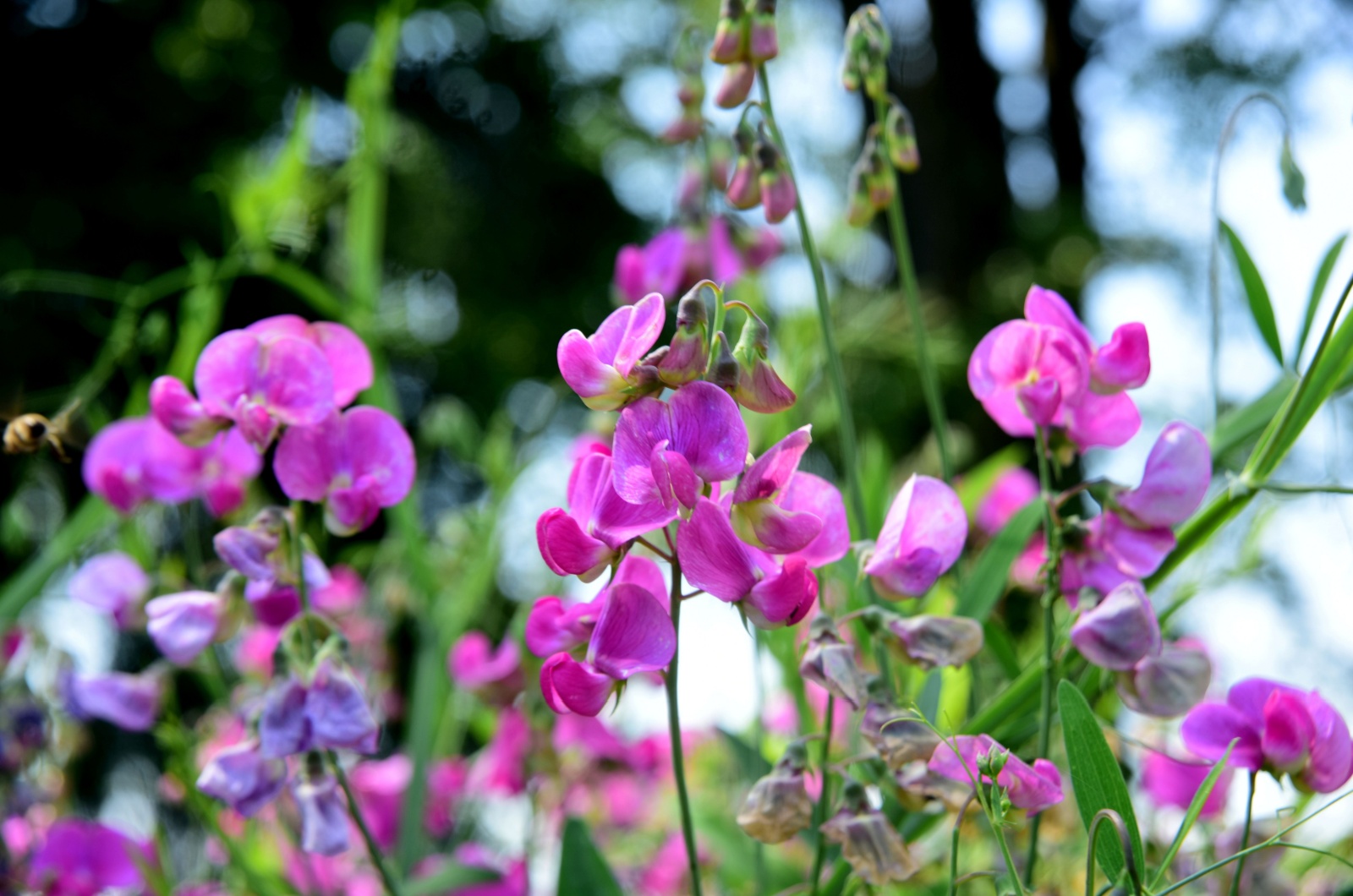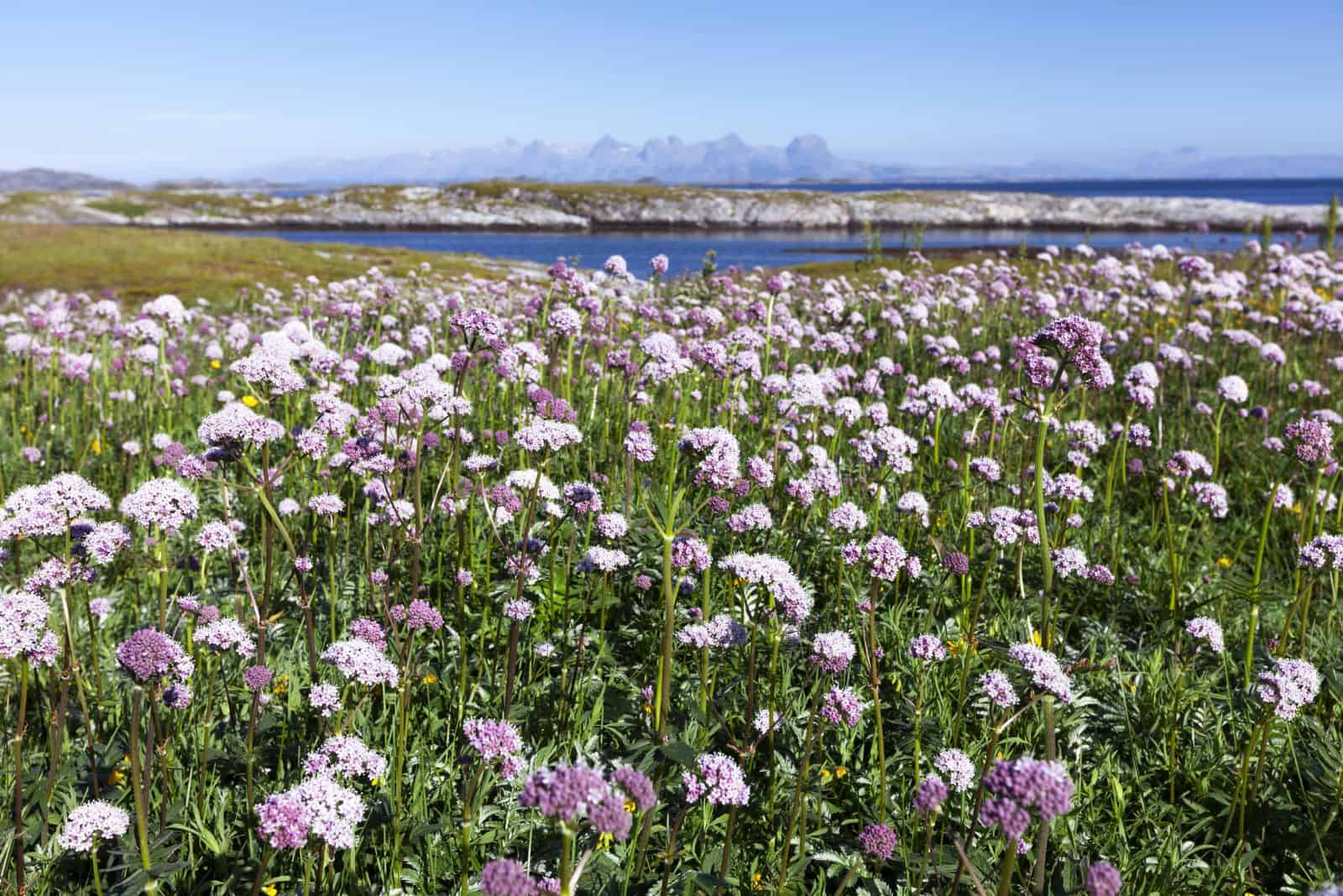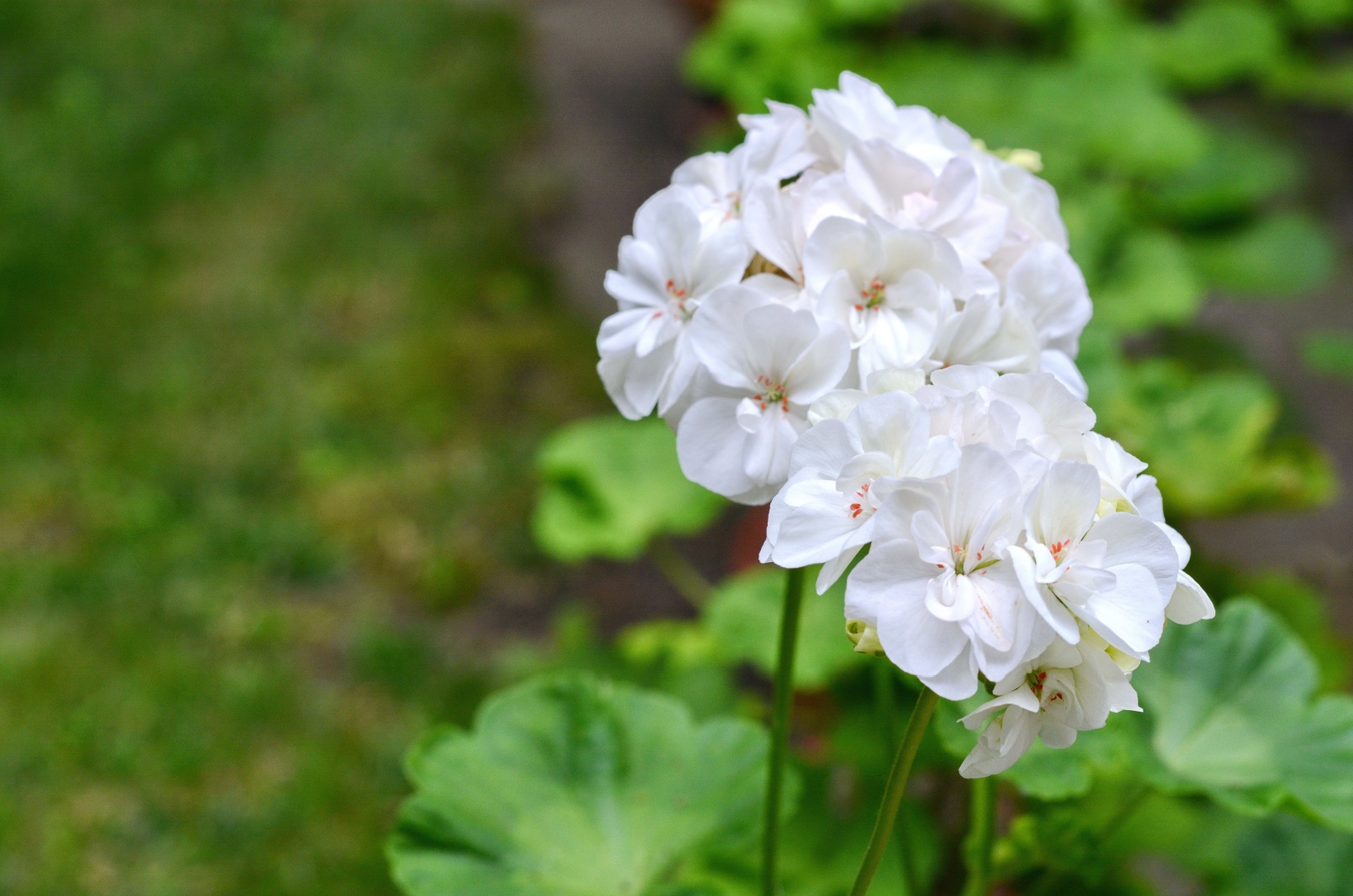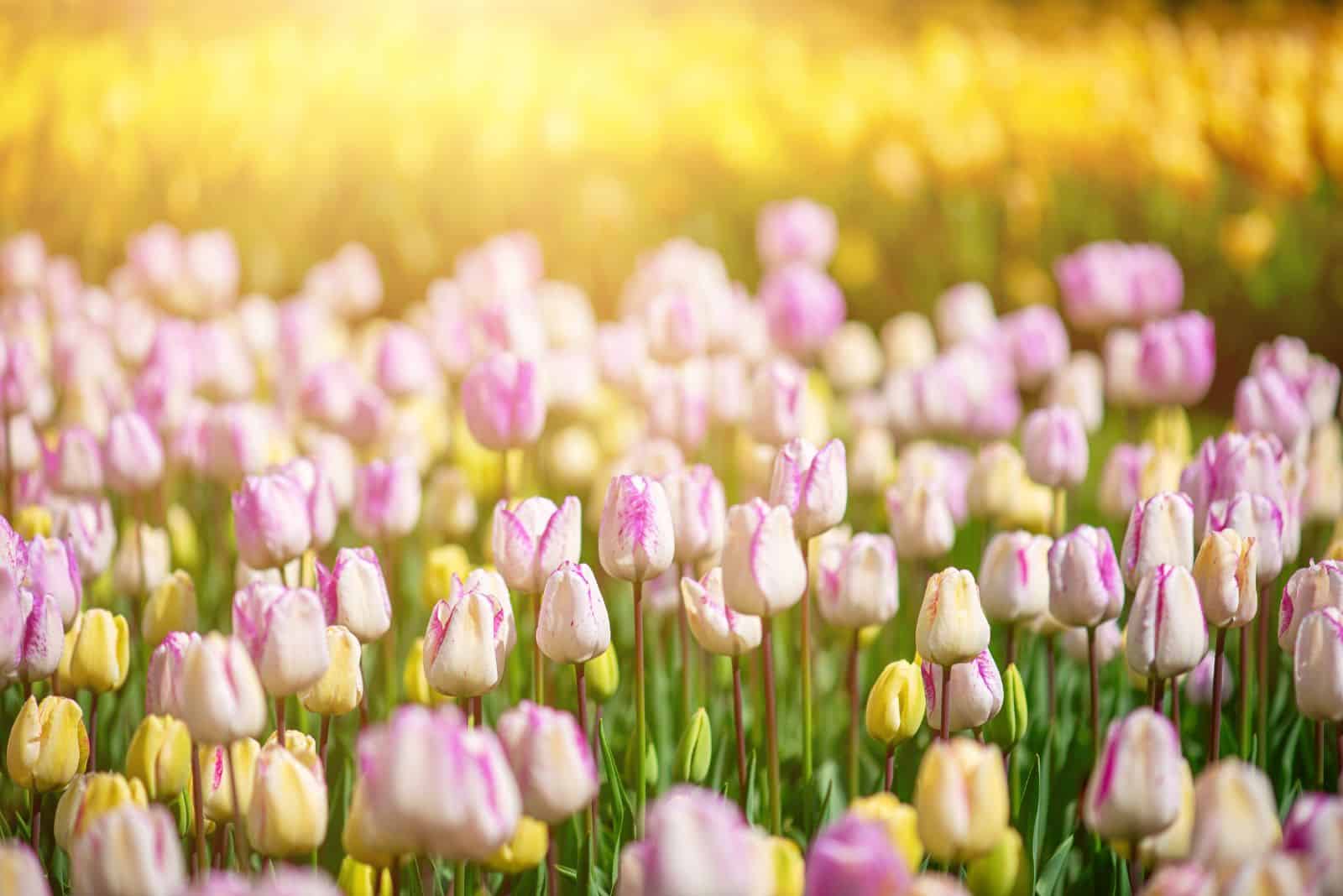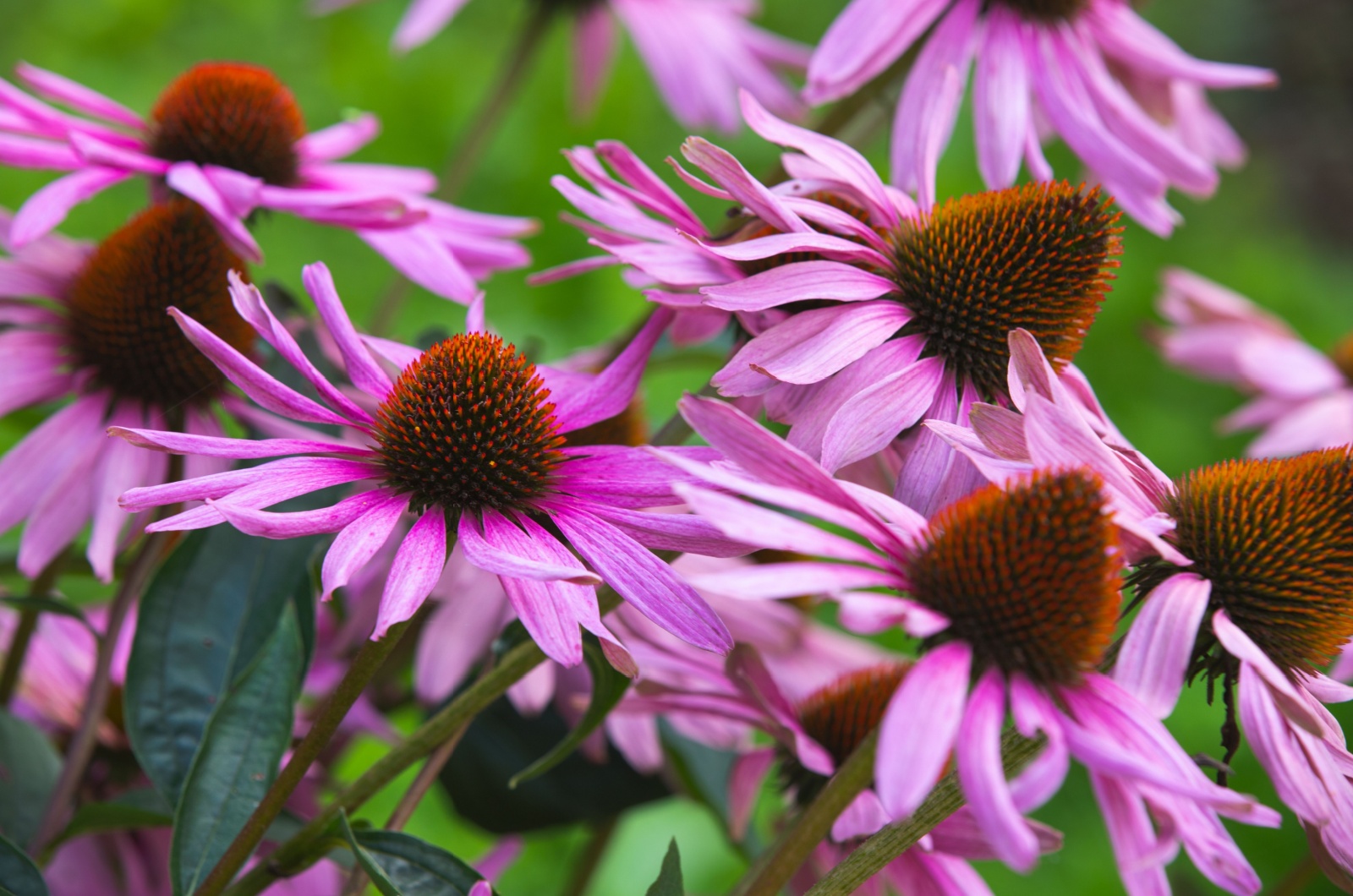Flowers have been used as a secretive means of expressing love, sympathy, and condolences for many years, especially in the Victorian era when the language of flowers boomed.
We still use them today – think of the red roses and carnations you get on Valentine’s Day!
But flowers are more than that. They can symbolize purity, endurance, strength, and courage, and what better gift can you give someone who has just recovered from an illness than a bouquet of sunflowers or a nice little cactus?
But why do certain plants mean what they mean? I mean, how did flowers that represent strength get their meaning?
Let’s find out below!
18 Flowers That Represent Strength
Flower meaning is something that never gets boring. Just look at the symbolism of black orchids, which can signify sadness, authority, power, luxury, elegance, and more.
But what about plants that symbolize strength? Well, we’ve got 18 unique choices you can plant in your garden today to enjoy their beauty, mythology, folk tales, and other symbolism!
Let’s dive right in!
1. Allium (Ornamental Onion)
We generally don’t grow onions in our flower gardens, but this variety simply looks stunning. It typically shows its circular flower heads in late spring and early summer, but there are some fall bloomers.
It is common in the Northern Hemisphere, and it has symbolized many things throughout history. In Egypt, for instance, it was a symbol of the universe due to its round flower head, whereas in Central and Western regions of Asia, it was thought to avert bad luck.
But today, allium signifies strength, patience, prosperity, and unity, so it’s a common addition to bouquets for friends and family or even married people.
2. Antirrhinum (Snapdragon)
The snapdragon flower comes in many bright and pastel shades, including pink, purple, red, orange, peach, yellow, white, and bicolor.
The name antirrhinum comes from the Greek word antirrhinon, which means “nose-like”. They have two different meanings.
One is connected with grace and strength as it can grow in unfavorable conditions of rocky grounds, while the other signifies deviousness.
So, it shouldn’t come as a shock to learn that this plant was used in mythology as a lucky charm against deception.
3. Amsonia (Blue Star)
This beautiful flower is primarily native to North America, but one species can be found in the Mediterranean and another one in East Asia.
Its periwinkle blue blossoms will appear in late spring, last into early summer, and rebloom if the conditions are favorable.
Of course, different cultivars come in different colors, but blue and white are the most common ones. It symbolizes strength, both physical and mental, so it’s an excellent and encouraging gift for your loved ones.
The blue star can also signify endurance and determination!
4. Aquilegia (Columbine)
Columbine is a plant that you can find on the list of flowers that attract hummingbirds and butterflies, so it’s a perfect gift for someone with a pollinator garden, especially if that someone is a fellow florist who understands the language of flowers.
The aquilegia was derived from the Latin word aquila, meaning “eagle,” and the plant probably got this name because its flower head looks like eagle claws.
It signifies many positive characteristics, such as wisdom, joy, and strength. However, it can also symbolize piety, counsel, consideration, and knowledge.
5. Astrantia (Masterwort)
The astrantia flower blossoms from late spring to mid-summer, and it adorns your garden with white, pink, or red blooms.
The name comes from the Latin word aster, which means “star,” and it left its mark during the Middle Ages. The stories claim that the astrantias were actually fallen stars!
Quite romantic, don’t you think?
Its star-shaped flowers adorn any place well, and it’s incredibly easy to maintain, which makes it a favorite plant of many growers and florists.
Masterwort typically represents inner strength, protection, and courage, but it can also signify many other things. This plant is a symbol of strong people who overcome difficulties, and it represents womanhood, self-reflection, youth, elegance, grace, and innocence.
6. Cactus Flower Meaning
Cactuses come in a variety of colors and shapes, and their meanings vary based on their color.
For instance, yellow, orange, white, purple, or non-flowering cactuses mean strength and endurance, but some other shades represent different things.
White cactus flowers can also symbolize purity and innocence, green prosperity and good luck, and pink joy.
Red cactuses signify romance and love, just like all other red flowers. At the same time, purple cactus blossoms are associated with knowledge and wisdom (but could also symbolize royalty and luxury like all other purple blooms).
There are many other colors that signify different beautiful things, so snoop around the internet and find out what your friend meant when they gave you a blue-flowered cactus!
7. Carnations
Carnations are popular flowers to give your loved ones on Valentine’s Day, especially red ones, which are a symbol of love.
However, they have a completely different meaning that’s based on colors. For instance, white carnations symbolize a mother’s strength, and that meaning came from a Christian legend.
It is said that this plant sprouted from where the tears of the Virgin Mary fell after she watched her son crucified.
Carnations are also on the list of popular Greek flowers and their mythology, and a couple of different myths are connected with this plant.
All in all, this colorful plant will put a smile on your face as soon as it blossoms in late spring. Another thing that all gardeners love is that cut flowers of a carnation can survive for a very, very long time (I’m talking weeks and weeks).
8. Cistus (Rock Rose)
The rock rose flower is native to Mediterranean rocky regions characterized by poor soil, so it’s not surprising that it symbolizes strength and endurance.
There’s even a legend surrounding this plant which talks of gods and their council on Mount Olympus. They had an important choice ahead of them: find a plant that would be responsible for healing.
And the task fell upon the rock rose, who was assigned with curing soldiers wounded on the battlefield.
However, goddesses had a different role for this flower. They wanted it to become a plant responsible for beauty care due to its pink blossoms.
And the outcome was that the cistus got both roles: healing and beautifying.
9. Echinacea (Coneflower)
This flower has a spiky epicenter, which is how it got its name, echinacea. It comes from the Greek word echinos, which means “sea urchin” or “hedgehog.”
The coneflower symbolizes strength and health, probably because it has many health benefits, some of which are treating toothaches, sore throats, burns, infections, insect bites, stomach cramps, and more.
This plant comes in a variety of colors. The purple coneflower is one of the most beautiful and popular coneflowers, and it symbolizes royalty, elegance, and grace.
The white coneflower signifies purity and innocence, while the orange one stands for enthusiasm and happiness.
10. Epimedium (Barrenwort)
This plant has a couple of interesting names: horny goat weed and the bishop’s hat. (Don’t ask me how it got them!)
It is native to Eastern Asia and the Mediterranean Sea regions, and there are quite a few reasons gardeners decide to grow them.
They are easy to care for, and their heart-shaped leaves attract admiring glances from all around.
It comes in all shades of white, creamy, pink, purple, and violet, and it typically represents fertility and strength.
Barrenwort contains icariin, which is a known aphrodisiac, so it’s quite understandable that it signifies fertility. But why does it represent strength?
Well, the epimedium can tolerate poor and dry growing conditions quite well, so it’s a symbol of strength, endurance, and the ability to overcome all difficulties life brings you and still be able to blossom.
11. Gladiolus
Gladiolus flowers have one of the most interesting Greek myths, and they’re also one of the charming French flowers this nation adores.
This plant takes us to Demeter, the goddess of the harvest. She loved strolling down the woods of Thessaly, but Erysichthon chopped down trees from that holy place.
Pious men wanted to prevent his wrongdoings, but no one could stop him. Erysichthon eventually decapitated one of the men, and the goddess Demeter created the gladiolus from the blood.
Later, she inflicted Erysichthon with an insatiable hunger, and he sold everything, including his own daughter, just to quench it. Finally, he devoured himself!
But, doesn’t the word “gladiolus” sound similar to the term “gladiator?”
Well, that’s because “gladius” is the root of the word “gladiator” — probably because of its sword-like shape.
But what are all the meanings of this plant? Well, it symbolizes moral integrity, the strength of character, faithfulness, and honor. (No wonder it’s deeply connected to the gladiators!)
12. Nasturtium
Another plant that symbolizes strength is the nasturtium. This plant is perfect for any yard as it is a great companion to pumpkins, tomatoes, cucumbers, and zucchini.
It blooms from summer until frost kills it, so you’ll be able to admire its orange, yellow, red, white, and creamy blossoms for a long while, although you might not be able to enjoy its fragrance (not because it doesn’t have it, but because it’s not that enjoyable).
We already mentioned that it is a symbol of strength, but it is more than that. It represents victory, and as orange is a happy color, nasturtiums also symbolize compassion, well-being, warmth, etc.
The plant also symbolizes patriotism and conquest, and soldiers often wore it on the day of victory (given to them by maidens). It is not known why this particular flower was chosen to represent victory; it could be because of its shield-like foliage or its vivid orange and red shades.
13. Phacelia (Scorpionweed)
The scorpionweed is an interestingly colored plant; its inner part is yellow, its petals are purple, and it withers to blue shades.
It is native to certain regions of North and South America and grows in dense groups, so it’s understandable why we named it after the Greek word phakelos, which means “bundle” or “cluster.”
The scorpionweed signifies strength, endurance, and perseverance.
The plant is hardy and can adapt to different growing mediums, which is why it can also symbolize overcoming difficulties.
14. Potentilla (Cinquefoil)
The word potentilla comes from the Latin term potens (“powerful”). It can be found in the Northern Hemisphere, and it’s actually a member of the Rosa family.
Its four-petaled blossoms can take on many different shades, from white and pink to orange and red.
The cinquefoil plant tolerates drought, low humidity, and scorching temperatures, so its symbolism of strength of character and endurance are perfectly understandable.
The potentilla also signifies womanhood, motherly love, loyalty, and honor, so it’s an excellent gift to your special (female) someone.
It also has many health benefits, such as treating diarrhea, helping with PMS, reducing swelling and inflammation, and more.
15. Sunflower
The sunflower is perfect in itself, even without some special meaning. But they do have a couple of them, and they make sunflowers one of the most popular florist plants.
For instance, this plant is associated with longevity, vigor, and good luck in China. But Native Americans have a different opinion and connect this plant with harvest and supplies.
The sunflower has even more meanings: it is also a symbol of adoration and devotion because of the myth about Clytie and Apollo.
Apollo didn’t return Clytie’s love, and she sat on a rock for nine days until she turned into a sunflower. That’s why it’s believed that this plant follows the sun’s movements.
This plant also signifies happiness and optimism because of its connection to the sun and, of course, strength!
16. Sweet Pea
This fragrant flower represents many things. The most common meanings are connected to loyalty, gratitude, pleasure, and saying goodbye.
However, there are other cultures and traditions that connect the sweet pea to truth, strength, and chastity. It was a good sign in France, and brides wore it for strength and to reveal the truth.
But even if it didn’t have this many meanings, the sweet pea is still a captivating plant with its colorful white, pink, lavender, blue, and red, butterfly-like blossoms.
This plant is typical in regions with warmer winters and can blossom late into the winter if all the conditions are met.
17. Valeriana (Valerian)
The valerian has a couple of meanings. It has many health benefits, such as treating headaches, anxiety, stress, insomnia, sore muscles, etc., so it got its name from the Latin word for “strong and healthy” (valere).
It grows all over the world, including North and South America, Europe, and Asia, but it’s not just valued for its medicinal application. This plant will look amazing in your yard with its scented, white, and pale purple five-petaled blossoms.
The Valerian flower blooms from June to August and symbolizes health and physical and mental strength, particularly when one has to be strong due to health problems.
18. White Geranium
Geraniums commonly represent happiness, friendship, good health, and wishes, but white geraniums tell a different tale.
They were thought to possess the power to deter snakes, so they were seen as a symbol of strength.
White geraniums are also considered to help with depression and anxiety, which is why they can signify mental strength as well. And due to their white color, these plants are frequently associated with purity and spirituality.
It is a summer-flowering plant that you can pair with earlier or later bloomers to have a colorful garden almost all year long.
Do Tulips Symbolize Strength?
What about tulips? They’re popular flowers and have many different meanings (for instance, tulip symbolism is based on color). Could it be that one of them symbolizes strength as well?
Well, there is one shade that signifies strength, but we’re not really sure how happy you’ll be. Black tulips represent strength and power, but they are really rare, and not many collectors have them.
Furthermore, black tulips are actually purple, and no true black tulips exist. However, they are still incredibly beautiful and not that difficult to grow; simply plant a bulb in your yard, and you’ll see the blossoms in spring.
Even if you cannot find the black ones symbolizing strength, you can always plant the red ones for love, the pink ones for good wishes, and the yellow tulips for happiness and joy.
Final Thoughts
This article presented 18 different flowers that represent strength which you can plant in your garden today. They look fantastic, smell intoxicating (well, at least some of them), and have a powerful tradition behind them.
Some were worn after victories and still symbolize patriotism and that kind of strength. In contrast, others symbolize motherly love and a mother’s strength, the strength of character, mental and physical strength, etc.
They’re all perfect for your yard, and it all depends on which color you prefer!
Enjoy these powerful plants, and until next time!
Like this post? Share or pin it for later!

